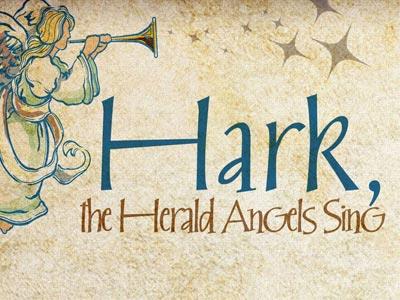-
Blessing The Boondocks
Contributed by William Mouser on Nov 28, 2017 (message contributor)
Summary: Focusing on the relative obscurity of Mary and Elizabeth in their historical contexts, this sermon encourages Christians who are "out in the boondocks" in any sense to take courage that God is pleased to do His work through them.
Second Sunday in Advent,
Luke 1:26-45
Comparison shopping is a fairly standard technique for shoppers these days. The internet has made it really easy to do. Many websites have a standard format for describing the various features of a product, and you can select a number of different brands of a product – say for example, a printer, or an automobile, or anything similar – and you can see on your screen a line by line comparison and contrast of all the different brands.
This feature of internet shopping came to mind as I was thinking about the gospel lesson for today. Luke’s gospel is not trying to let us do comparison shopping, like those internet sites. But, the organization of the opening chapters of his gospel remind me of the way those shopping sites are sometimes organized – the way two things are laid side by side, so that we can most easily note the comparisons and contrasts, what is the same in both of them, and what is different.
The first chapter of Luke’s gospel first takes up the announcement of the birth of John the Baptist, and after that the announcement of the birth of Jesus. After that, Luke recounts to us events surrounding the birth of John the Baptist, and then the events surrounding the birth of Jesus.
In last week’s gospel lesson, we read about the announcement of the birth of John the Baptist, and this week we have just heard about the announcement of the birth of Jesus to the Virgin Mary. And, since both accounts are reasonably fresh in our minds, I want to do what I think Luke wanted us to do – to view both accounts together and to note what is the same about both of them, and what is different.
Let’s first note what is the same in both accounts. Several obvious similarities jump out at us.
Both episodes record the announcement of a the birth of a son. In both announcements, it is not only a son whose birth is announced, but we’re also told the name these sons are to bear – John, and Jesus. With today’s technology, neither of these are particularly remarkable, because parents can routinely discover the sex of their children in the womb and then spend several months figuring out what to call them. Back then, of course, these birth announcements weren’t taking place in an obstetrician’s office as he used a sonogram. Matters were a tad more unusual. For, you see, neither of these births were going to proceed by ordinary pregnancies. In fact, these pregnancies were so unusual, that we’re correct in naming them miracles.
In keeping with the miraculous nature of the pregnancies themselves, we have the appearance of an angel, and a most high and lofty angel at that. Gabriel is the angel who appeared to the Prophet Daniel and helped him to understand the visions of the future he was seeing. Jewish legend has Gabriel destroying Sodom and Gomorrah, and the hosts of Sennacharib. Jews thought that it was Gabriel who buried Moses. In the Christian tradition, it was Gabriel who appeared to Joseph, Mary’s husband. And, early Christians related that it was Gabriel who strengthened the Lord in the Garden of Gethsemane.
When we read this, we think that the involvement of an angel is one of the unusual features, but this is not true. The Scripture teaches us what we read in verse 4 of the 104th Psalm: God makes the winds his messengers, flames of fire his servants. It is this verse from the Psalms that the author of Hebrews quotes when he writes, Are not all angels ministering spirits sent to serve those who will inherit salvation?
No, the unusual thing here is that we actually see the angel Gabriel as he performs the service, for in their labors for believers, angels are mostly invisible and their services for our benefit are not the kinds of things we ordinarily ever see.
Two other things are similar between the announcements of the birth of John and the birth of Jesus. Both announcements are fulfillments of Old Testament prophecy. Last week we saw how Gabriel made a paraphrasing allusion to the last verse of the Old Testament – that statement about the coming prophet who would turn the hearts of the children to the fathers and the fathers to the children. Gabriel was saying that this prophecy would be fulfilled in John the Baptist. When speaking with Mary, Gabriel also points to Old Testament prophecies of the coming Davidic Messiah. Luke doesn’t tell us whether or not Gabriel mentioned Isaiah 7:14, but Matthew certainly did in his gospel “"Behold, the virgin shall be with child, and bear a Son, and they shall call His name Immanuel,"[4] which is translated, "God with us."

 Sermon Central
Sermon Central



